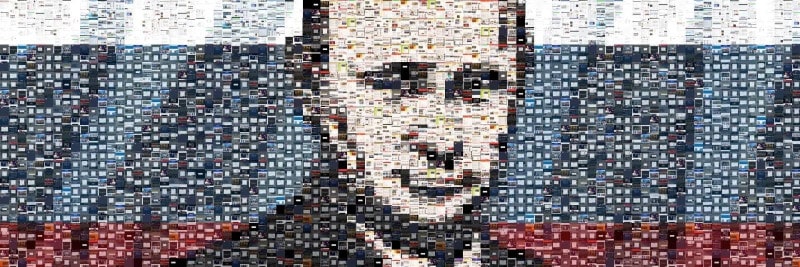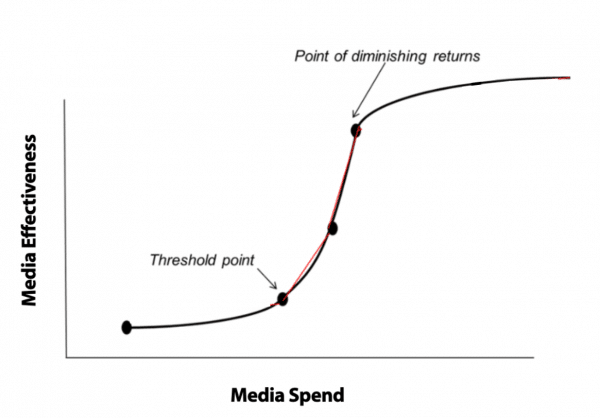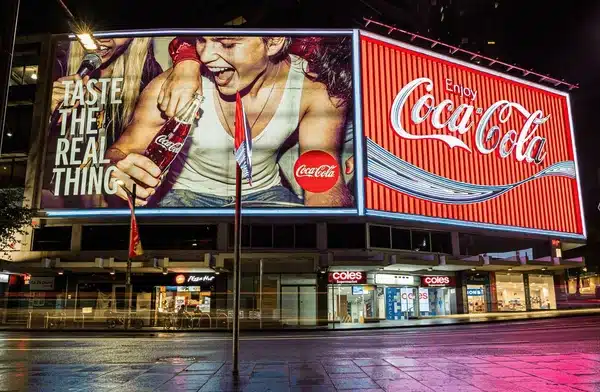
Yup, we’re going to delve into some military propaganda and persuasion techniques and how they might be applied to your branding efforts.
Specifically, we’ll look at modern Russian propaganda techniques, as described by the RAND corporation under the title “The Firehose of Falsehood”.
But don’t let the title fool you, there’s some good stuff there, even if you’re committed to “truth in advertising,” as I certainly am.
And keep in mind, these techniques are powerful enough to make federal agencies and media authorities shit their pants, clutch their pearls, and whine at their inability to effectively counter them.
In other words, it’s shockingly effective stuff, well worth examining in detail.
So according to RAND, the “Firehose of Falsehood” model has four distinguishing factors:
- High-volume and Multichannel
- Rapid, continuous, and repetitive
- Lacks a commitment to objective reality
- Lacks commitment to consistency
Obviously, since we are interested in truthful persuasion, we’ll have to put a spin on those last two factors, but I promise it’ll all make sense if you stick with me.
So let’s take these factors one at a time…
1. High Volume and Multichannel
Think of volume as frequency. If you want your brand persuasion to work, you need your campaigns to have high frequency.
The higher frequency the better.
At a minimum, you’ll want your average audience member to encounter your messaging multiple times per week. Standard Wizard practice is to aim for three or more exposures per week.
And in my experience, you’ll get dramatically accelerated results with four or more per week.
However, since mass media channels make you pay for that frequency, this means you’ll reach fewer people than you would with a lower-frequency media buy.
That’s the trade-off. But it’s totally worth it.
You’ll do much better reaching fewer people frequently enough to actually persuade them than you otherwise would by reaching a larger audience too infrequently to make an impact.
Multichannel means two things:
- Using more than one mass media IF you can afford it, and
- Employing your brand elements at every possible customer touchpoint
On mass media, there’s a classic S-Curve of Spend vs. Efficacy that looks like this:

When you’re starting out with your branding efforts, you generally don’t want to jump to using more than one form of mass media until you can afford to get to the point of diminishing returns on your first media.
And you certainly don’t want to invest in multiple media when you can’t afford to get past the threshold of effectiveness on any one of them.
But once you CAN afford to jump to a second mass media, by all means, do so. There is documented evidence that you get a synergistic boost by adding multiple media channels to your mix.
Just understand that multichannel extends beyond broadcast media.
You can take your branding multichannel by ensuring that your website, social media, packaging, truck wraps, and staff are as fully branded as your ads.
This is why Brandable Chunks and Brand Codes are so vitally important to your campaign — they help with this multichannel aspect of effective modern branding.
2. Rapid, Continuous, and Repetitive
Let’s start with Continuous and Repetitive.
Your branding campaign should run 52 weeks per year, for multiple years, so you can be on the air and in the minds of customers continuously.
And your central message should be repetitively delivered by every ad, often multiple times within each ad.
In other words, your Brand Codes should be applied with what feels like ridiculous repetition and density.
How often should Volvo remind buyers that they build safe cars?
As often as they can. In every ad. Probably multiple times within an ad.
How many Brand Codes should Coca-Cola pack into their ads? As many as will fit
And they do! Check it out:

This billboard has:
- Coca-Cola red
- The distinctive, flowing Coca-Cola script
- The distinctive Coke “dynamic ribbon device”
- The distinctive Coca-Cola bottle
- The “real thing” brandable chunk
So that covers continuous and repetitive. What about rapid?
Rapid means that your ads change — while keeping the core messaging consistent — more rapidly than your audience can tire of them.
The higher your ad frequency, the more often you’ll want to rotate ads.
3. Lacks a Commitment to Objective Reality
Obviously, you’d want your advertising to be based on the truth, and aimed at communicating the truth.
But in order to be persuasive, you’ll need to be as committed to subjective truth as objective truth.
So techniques like hyper-realism, absurdist drama, humor, caricatures, and schtick should be embraced.
Don’t be so committed to objective reality that you forget to make your ads emotional and memorable.
For instance, Eggo Waffles are actually delicious. But I rather doubt any family has ended up in a tug o’ war over an Eggo Waffle popping up out of the toaster.
Or that beer drinkers ever actually argued whether Miller Lite tasted great or was less filling.
Both techniques represented absurdist drama aimed at communicating subjective reality, even if that meant moving past objective reality to do it.
4. Lacks a Commitment to Consistency
This could seem confusing.
How in the wide world of sports can a campaign be repetitive and consistent while lacking a “commitment to consistency”.
In propaganda terms, this means being able to float multiple disinformation rumors that might well flatly contradict each other. The idea is that as long as all the stories work to discredit the truth, the contradictions won’t hurt.
But in advertising, you’re not looking to discredit the truth. You’re looking to create associations that improve the desirability of your brand.
So contradiction will only hurt. In this sense, you absolutely must have a commitment to consistency in your core messaging and your use of brand codes.
What can be thought of as “inconsistent,” however, is where you put your focus in any given ad.
For instance, when detailing the quality of your product, you could list out all the factors that go into your premium widget.
Or you could make a series of ads, where each ad focuses on only one factor, allowing you to dramatize and bring to life that single factor.
Coors Beer did this when they launched their first national campaign and it worked wonders.
The thing about Brandable Chunks is that you don’t have to have every chunk in every ad, nor do they have to show up at the same spot within the ad.
The fact that you can mix and match allows for variation with repetition. It’s consistently inconsistent. Or inconsistently consistent.
The other “inconsistency” that you should consider is Code Play.
Once you’ve established your Brand Codes in the minds of the audience, you can then play with them, as Absolut Vodka did with their legendary print campaign.
Or like Snickers did recently with their packaging.

So certainly have consistency, but also be willing to leverage the right kind of inconsistency to your advantage.
The Firehose As a Cheat Code to Fame
So that’s how you can pack (Russian) Military-Grade Persuasion Power into your branding campaign.
And the best way to think about these techniques is as cheat codes to achieve fame for your brand.
Making your campaign:
- High-volume and Multichannel
- Rapid, continuous, and repetitive
- Subjectively resonant
- Delightfully and Playfully Inconsistently Consistent
Will allow you to grab more fame for your brand than your budget would otherwise allow.
That’s why I think of this more as a Firehose of Effectiveness than falsehood.
But what do YOU think?
Let me know by contacting me here.
P.S. It’s interesting that many of these Russian Propaganda techniques match strategies for manipulating crowd psychology first proposed 135 years ago.
- Getting a Foot in the Door — Of Perception - November 27, 2025
- What Digital Superstars Know About Offline Advertising - November 17, 2025
- Unmistakable: A Tale of Two Boots and Branding Done Right - November 8, 2025
